18 January, 2023
windows
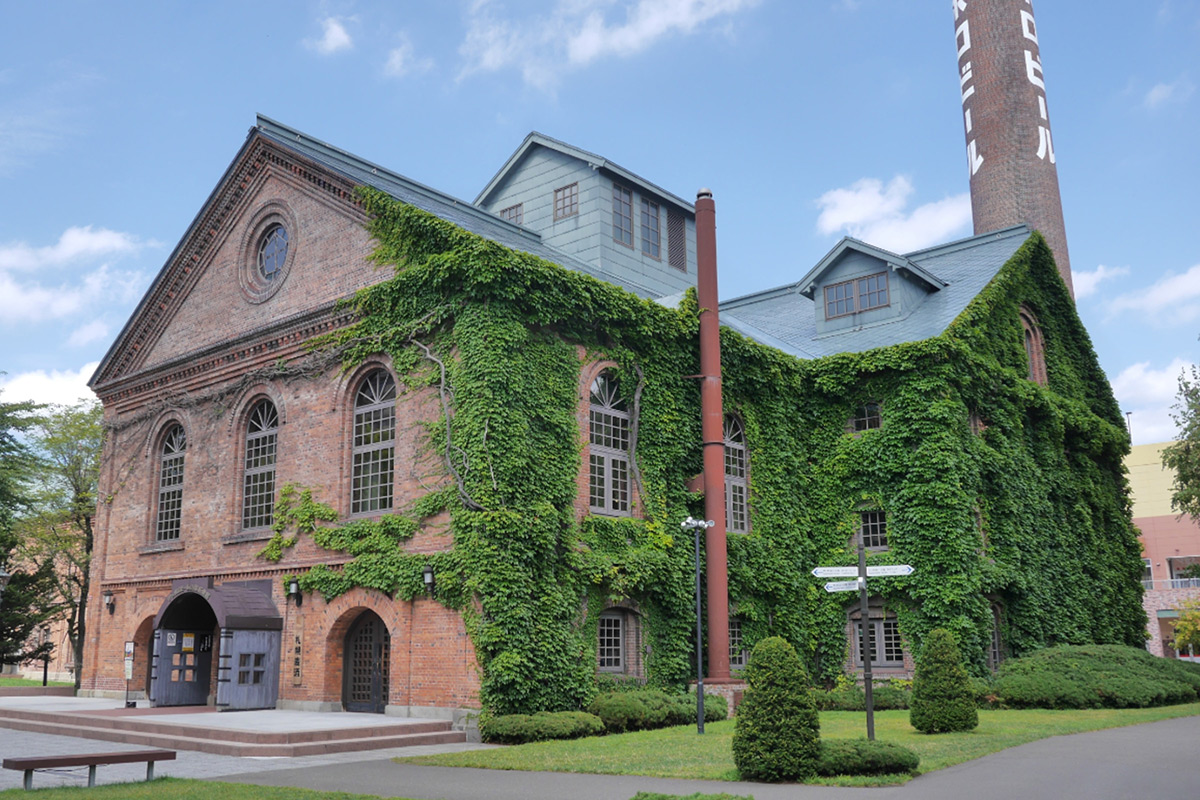
We do not come across steel windows very often these days. They seldom appear in our homes unless, of course, we live in a loft. That is where such windows reign supreme. They usually turn up where we want to draw on history or cherish history. They can be beautiful but also clever in camouflaging their capabilities when the priority is to protect heritage buildings. They are worth getting to know, as they surprise at every turn.
We deem the period of the industrial revolution the age of steam and steel for obvious reasons. At that time, the world began to be driven by the steam engine, and the resulting power could only be harnessed through steel.
Steel became ubiquitous. Not long afterwards came the age of concrete and glass (with steel still playing a crucial role), which gave us skyscrapers, but that is a topic for another day.
Here it is worth stressing that the great strength of steel began to force its omnipresence. At least where future users were able to pay for it. Initially, steel cost an arm and a leg. It was only with time that the new technological advances gained more users, revolutionising everyone's everyday life.
In today's world, we are inundated with plastic. We are becoming increasingly aware of the problem and understand its shameful source - plastics are too convenient for us to shun. Steel served this role before plastic, although, as we know, its microparticles did not enter the human or animal body.
An alloy of carbon and iron was ideally suited for any construction, as it is relatively lightweight and surprisingly strong compared to the materials found at the time. These were mainly wood and bricks, which also did not achieve the elegant form that modern products do. The technologies were not yet available.
Wood is almost rock-solid today. Within reason, of course. However, this requires proper drying of the raw material, processing, pressing, glueing, impregnating and applying protective coatings, to name a few necessities. When steel began its global expansion, none of the above was within the realm of possibilities.
Steel immediately displaced rotting wood and crumbling bricks while providing the opportunity to create new, lighter and more practical structures.
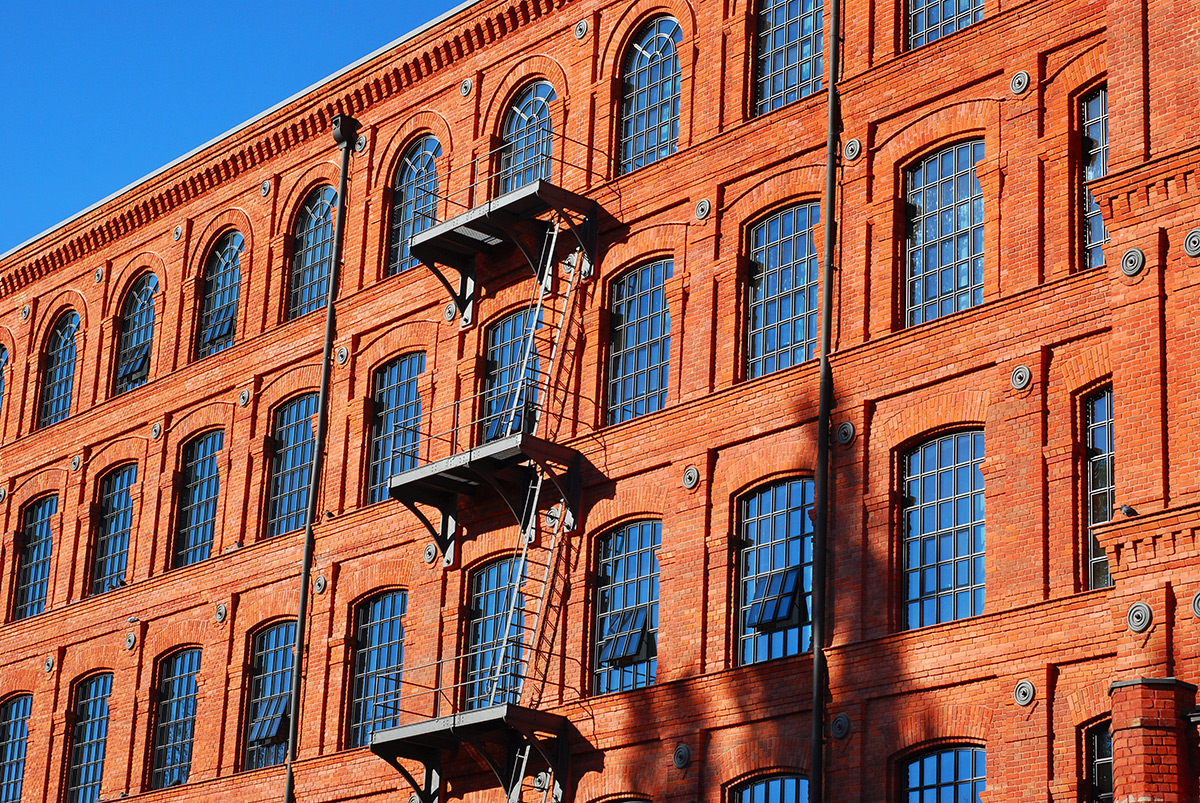
We make all sorts of fancy and, it has to be said, often not very useful objects out of plastic today. It is just easy, so we do not shy away. With steel, it is not so easy, but at the time of its debut, it represented a real breakthrough.
It turned out that it was possible to create things that were bigger, more complicated and with interesting shapes. Arcs were no longer a problem, and curves became normal. Steel made it possible to use slimmer profiles, increase glazing areas and create lighter windows. Thick wet wood was incomparably heavier than slender sturdy steel profiles.
Any novelty always costs more. Such a novelty tax applies to everything, not just electronics, with which we most often associate it. Therefore, the origins of steel as a practical decorative element are mostly linked to public buildings and churches.
Steel was used to make the framework of stained-glass windows in churches, giant glazings based on steel profiles appeared in railway stations and town halls, and the characteristic high windows with rounded edges appeared wherever there was money.
Swiftly, matching resources began to appear in the exploding industry. That is why, for example, in the steam locomotive depot in Kościerzyna, no one even came up with the idea of putting in wooden windows - it proudly displays windows made of steel. Today it is an important landmark and a place admired by tourists from Poland and all over Europe.
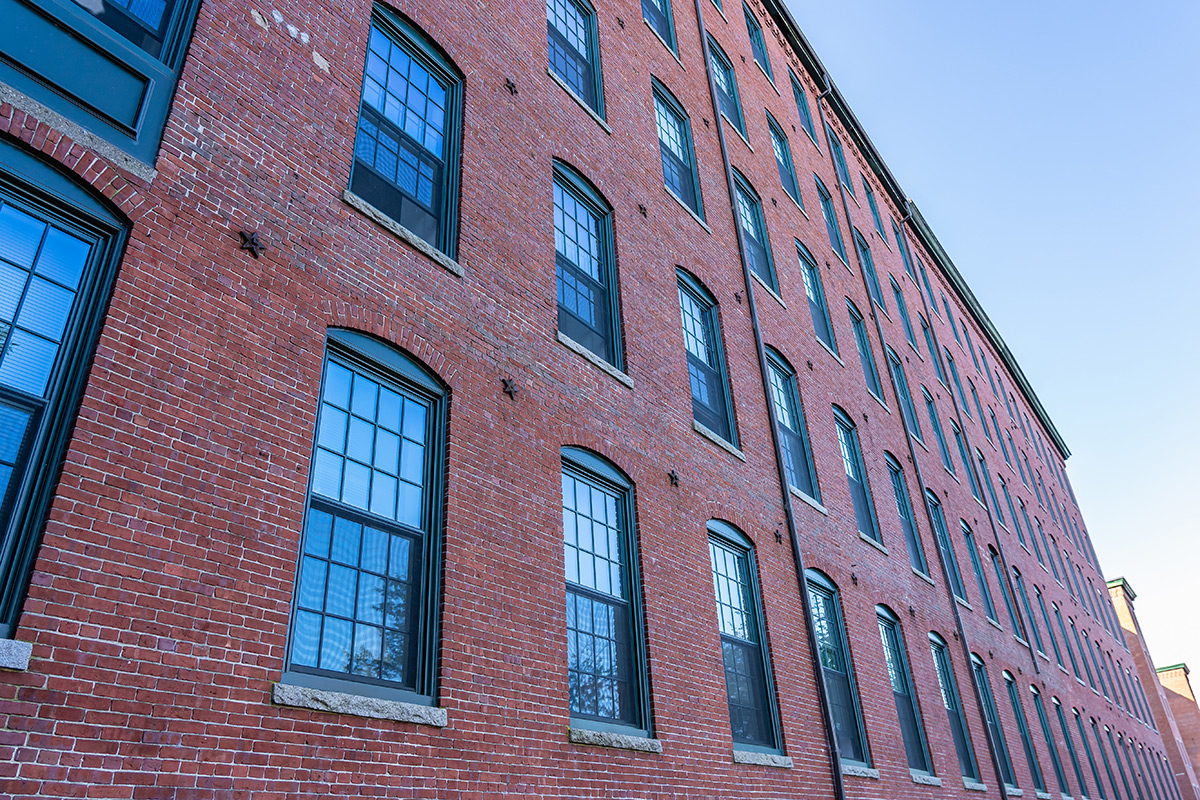
The native environment for a steel window is, naturally, a typical industrial setting. This should come as no surprise – we admire to this day large steel projects where industrial development has been most dynamic. Good examples are Łódź and the Upper Silesian Industrial District.
Industrialists had access to steel, so they were keen to use it. Often by traditionally installing casement windows in place of their wooden counterparts. Increasingly, however, windows were interspersed with masses of muntin bars and covered entire walls, so some or all of them had to be fixed.
Today, these types of fenestration are the most spectacular remnants of the industrial age. There is no denying that they are dreadfully challenging to renovate.
Nowadays, the owner of antique steel windows has to expect to be in the power of the historic preservation officer. Even if it is not a listed building per se, it is enough if it is located in a historic district, which sometimes means simply the city centre.
Although they are necessary and understandable, the restrictions imposed by the preservation officer do not make life any easier. Usually, it turns out that the only renovation possible without much of a headache is profile painting. And this does not solve the real problem – such old windows are cold.

Industrial style is perceived as the transfer to residential and commercial buildings of a style once reserved for industry, including transportation in its broadest sense. It was born when it became apparent that we had a lot of post-industrial buildings, and their total adaptation to the modern urban fabric was not viable. It was better to leave bare brick, untreated wood and shiny steel as they were. No plasterboard allowed.
To renovate such interiors, we usually have to use the same materials. Admittedly, we have a variety of alternatives imitating steel available predominantly among aluminium systems. In most cases, the historic preservation officer will not allow them.
Let's summarise – the preservation officer may or may not demand that the new windows:
In many cases, our hands are tied, and we cannot visually change anything. We are forced to copy precisely old abandoned techniques. The result is the necessity of using the same practices, e.g. we have to resort to single glass panes instead of modern glazing unitsutilising thermal breaks between two, three or even four sheets of glass.
Even in this case, it is not a lost cause. We can take one of two approaches:
Both methods have their advantages and disadvantages.
Dedicated synthetic covers can be fitted to steel windows. These are attached to the profiles via magnetic catches. It may not be a pretty solution, but it is a price worth paying for the drastic reduction in heating expenses.
A window with only one pane of glass will freeze through, so any other measures will be of little use if we do not do something about it first. Magnetic installation ensures that our remedy will have no lasting effects on the window, and the preservation officer will not consider it heritage destruction.
Very rarely do any external blinds become an option. Internal solutions are usually impractical and ineffective. Sometimes they are also simply unacceptable. Shutters fitted inside may be an exception, but their use does not harmonise aesthetically with the steel windows look.
In many cases, all that matters is how a window looks from the outside. What it conceals is already less relevant. At least for the aesthetics of the city. So is the assumption made by the developers of systems, which from the perspective of a passer-by, look just like old steel windows. In reality, these are positively high-tech windows.
Such windows can even have a triple-glazing unit with remote-controlled tilt chambers invisible from the outside. These allow easy ventilation of the building.
Such a window is a modern warm window that, from a distance, looks like an antique. Its profiles are even visually aged so that no one would notice. It is shabby chic adapted to window design.
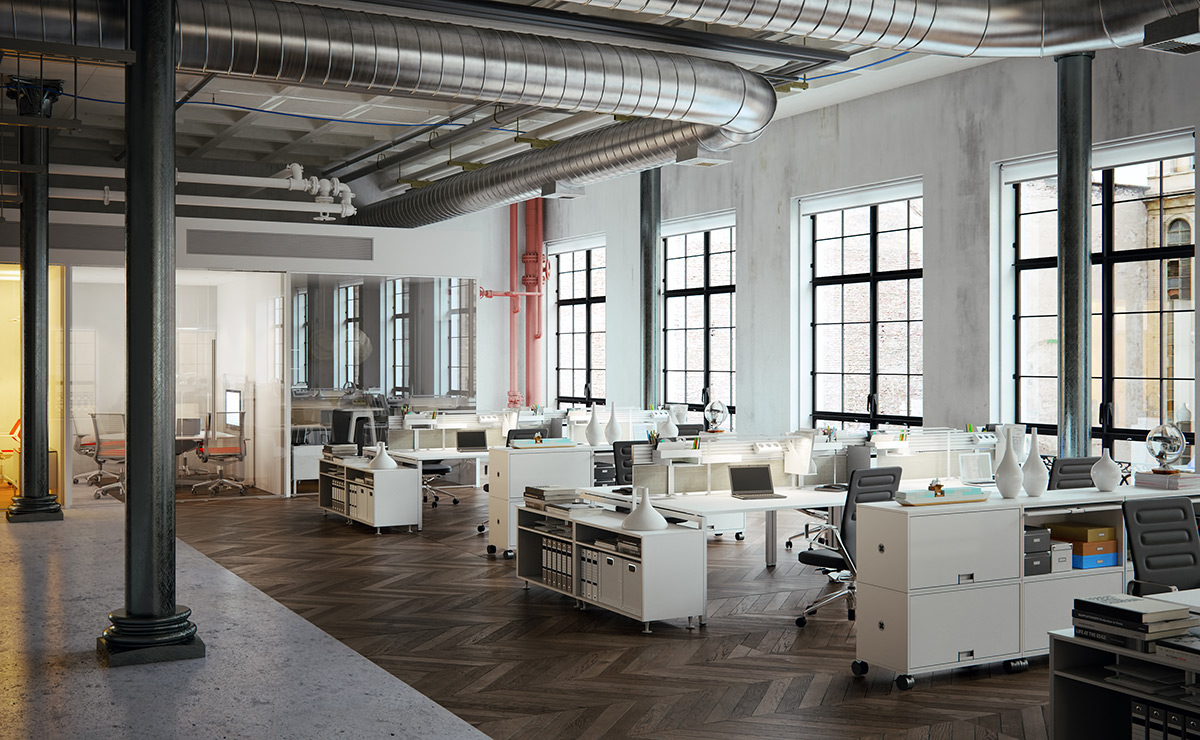
Lofts are the pinnacle achievement of industrial architecture. These are the dwellings we mean to both look good and serve us properly.
Steel is substantially the only option available here, as we expect slim and sturdy profiles in large windows.
Aluminium is a potentially acceptable alternative, but its profiles will not be soaring enough in tall windows.
In contrast, wooden windows in a loft space are undeniably a compelling option. However, they do not fit into typical industrial arrangements and would be an unbecoming deviation from the stylistic goal.
With their rounded profiles, plastic options miss the point utterly and ruin the desired effect. We can only accept it as a far-reaching compromise. And this only with the right veneers. Nowadays, plastic windows are highly versatile, and we can choose profiles that are more cubist in nature. Nevertheless, they relate better to cosy wood than raw steel, which we aim for in this context.
What is more, this ignores the voice of the historic preservation officer, something we cannot afford in practical planning.
In short, windows for the loft:
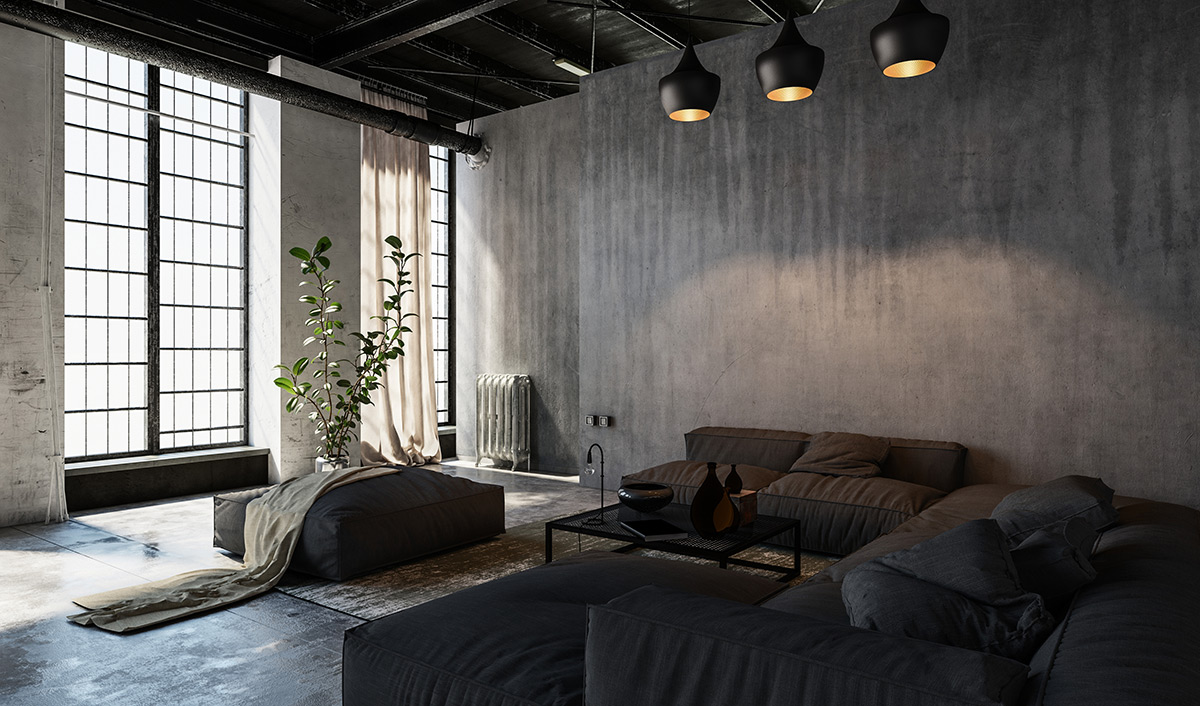
In modern loft spaces, we want to surround ourselves with technology. Primitivism is good, but only in aesthetic terms. This is why we can use, for example, dedicated built-in photovoltaic panels in steel windows.
The above idea is merely a curiosity showcasing the apex of possibilities and something well in line with the smart-home concept. However, this will not be the typical priority of a loft user. Warmth will be the uncontested priority.
If a building has already been converted to flats, we can expect windows with all the technologies that make them warm:
In addition, there are solutions designed for windows with characteristics typical of lofts. These include, among others, tilt handles installed at the bottom of a very tall window that can be operated without a ladder necessary to reach the handle in the standard position.
Windows made of steel are undoubtedly a fashionable choice and are not limited to loft spaces. Naturally, they are best suited there, but all modern interiors will benefit from their presence. This is all the more true since they offer excellent performance and can integrate smoothly into smart home systems. They are already widely appreciated by creators of public spaces such as offices and hospitality venues.
It is worth getting to know them if you have not already had the pleasure.

Hotline: +1 917 810 8657 +48 572 337 243 Connection fee in accordance with the operator`s price list.
Eko-Okna S.A.
Kornice, ul. Spacerowa 4
47-480 Pietrowice Wielkie
NIP: 6391813241, KRS: 0000586067